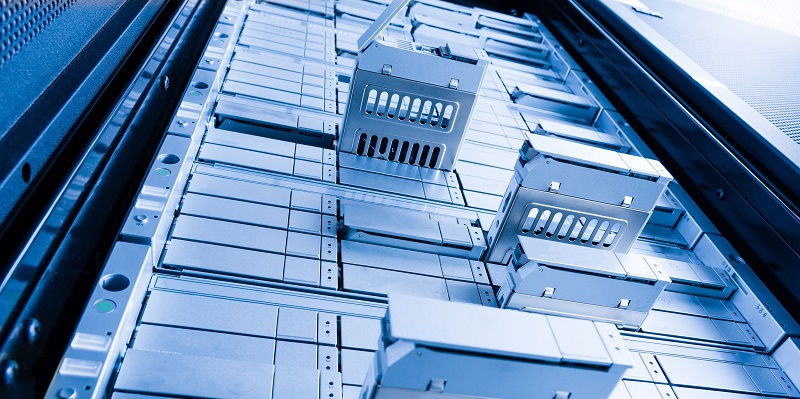In the digital age, data storage is a crucial aspect of any business operation. With the ever-increasing volume of data being generated, organizations must employ storage solutions that cater to their varying needs. This article explores the concept of hot storage and cold storage, delving into their respective advantages, use cases, and cost considerations to help organizations optimize their data storage strategies.
Introduction to Hot Storage
Hot storage refers to the storage of frequently accessed data that supports critical business applications. It plays a vital role in ensuring seamless operations by allowing quick access to crucial information. By storing data on flash-based drives, organizations can retrieve and deliver data swiftly, minimizing delays and enhancing performance. The ability of flash drives to provide rapid data retrieval makes them a popular choice for hot storage applications.
Advantages of Flash-Based Drives for Hot Storage
Flash-based drives offer several advantages when it comes to hot storage. One primary advantage is their ability to deliver data at lightning-fast speeds, significantly reducing access latency. This rapid data retrieval is critical for applications that require real-time information, such as financial transactions, online shopping carts, or customer support systems. Moreover, flash drives are highly reliable and durable, ensuring data integrity and minimizing the risk of hardware failures.
Cost Considerations of Hot Storage
While hot storage offers enhanced performance and accessibility, it comes with a higher price tag compared to colder storage tiers. The cost of flash-based drives, in particular, can be significantly higher than traditional disk-based storage options. Therefore, it is essential for organizations to carefully evaluate their data storage needs, aligning expenditure with critical workloads that truly require hot storage capabilities.
Use Cases of Hot Storage
In an era where every organization faces the risk of cyber threats, safeguarding critical information has become paramount. Hot storage plays a crucial role in storing and quickly retrieving cybersecurity data. By storing security logs, incident reports, and real-time threat analysis on flash-based drives, organizations can swiftly identify and respond to potential security breaches, bolstering their overall security posture.
Customer satisfaction is the cornerstone of any successful business, making customer relationship management (CRM) tools vital. These applications rely on hot storage to provide quick access to customer data, transaction history, and communication logs. By using flash-based drives, businesses can ensure that customer queries and requests are addressed promptly, delivering a seamless customer experience.
Hot Storage for Data Analytics and Big Data Operations
The rise of big data has revolutionized the way organizations derive insights and make informed decisions. Hot storage plays a pivotal role in data analytics and big data operations by ensuring the real-time availability of data. Analytical tools and platforms leverage hot storage to access and process large datasets quickly, enabling organizations to obtain valuable insights and act on them in a timely manner.
Introduction to Cold Storage: An Archival Solution
Cold storage, in contrast to hot storage, stores data for long periods at lower costs. It serves as a cost-effective archival solution, suitable for data that is not frequently accessed but still needs to be retained for compliance or historical purposes. Industries like healthcare, finance, and legal, where regulatory requirements demand long-term data retention, greatly benefit from cold storage solutions.
Benefits of Cold Storage for Regulated Industries
Regulated industries, such as healthcare and finance, often face strict data retention policies. Cold storage provides a reliable and economical solution for these organizations to store data spanning several years. By utilizing cold storage, organizations can comply with regulatory obligations while minimizing storage costs associated with maintaining vast amounts of data.
Cold Storage for Large Data Sets and Future Analytics
Another critical area where cold storage shines is in storing large datasets destined for future analytics. Organizations collect vast amounts of data, especially from IoT devices, which may not be immediately necessary for real-time analysis. By utilizing cold storage, companies can store this data cost-effectively without compromising accessibility, setting the stage for advanced analytics and insights in the future.
Effective Storage Tiering: Organizing Data Based on Access Frequency
Effective storage tiering involves organizing data based on its frequency of access. Regular inventory and organization of data are crucial tasks for optimizing storage systems. By segregating data into hot and cold tiers, organizations can allocate resources efficiently, maximizing performance and cost-effectiveness. This proactive approach ensures that frequently accessed data resides in hot storage, while less frequently accessed data is moved to cold storage, resulting in an optimal storage environment.
Balancing the need for quick data access with cost considerations is vital for organizations when designing their data storage approach. Hot storage, powered by flash-based drives, enables fast retrieval of critical data for immediate business needs. On the other hand, cold storage offers a cost-effective solution for long-term data retention and archival requirements. By understanding the advantages, use cases, and financial implications of both hot and cold storage solutions, organizations can tailor their approach to meet their unique business needs, ensuring efficient and secure data storage.

